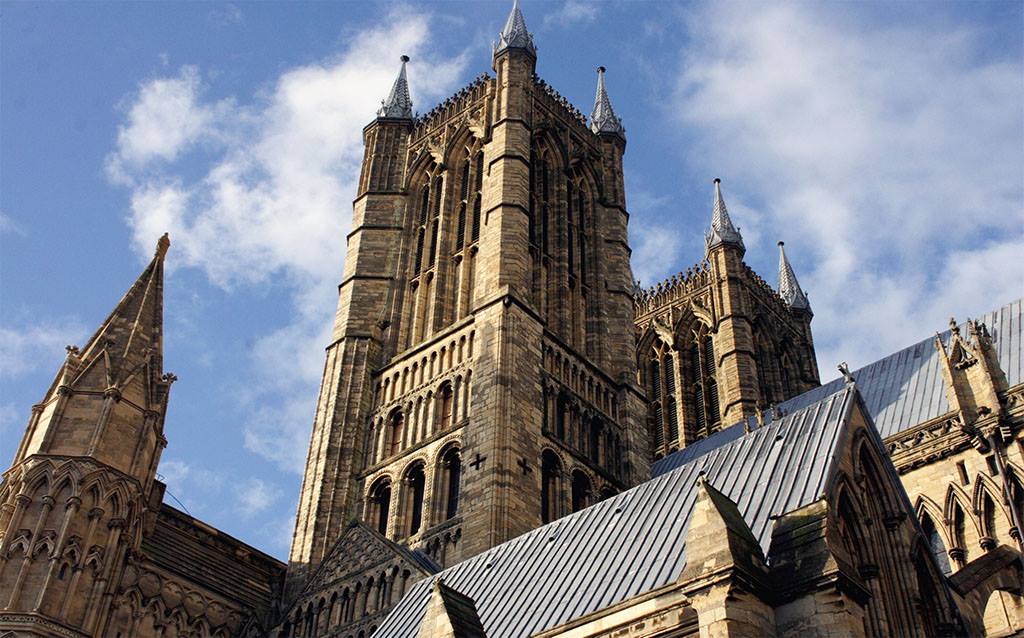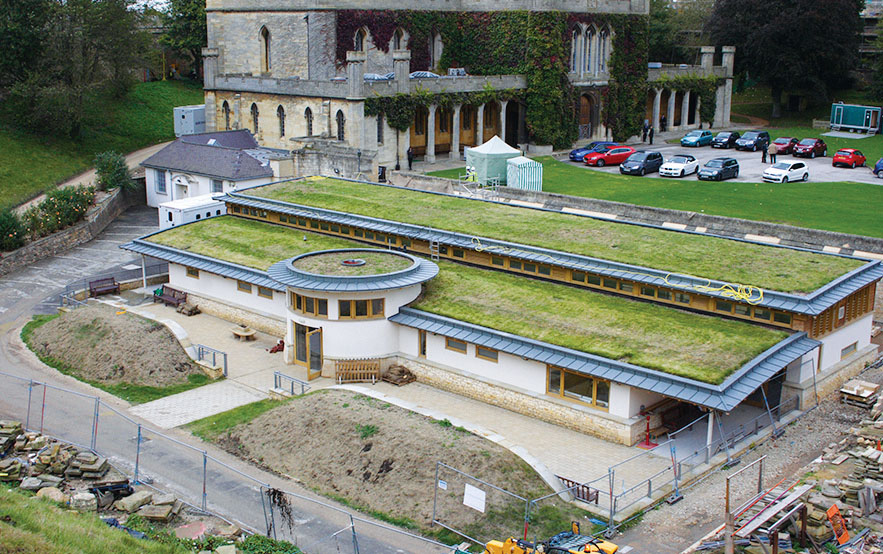
From the Iron Age to the Romans and into the Middle Ages - treasures left in Lincolnshire through the centuries.
Approaching Lincoln by train or roadway, the towers of Lincoln cathedral can be seen for miles perched on the only hilltop across the fat Lincolnshire fens. The Romans first settled a legion here on what was an Iron Age site: Lindum Colonia. A millennium later, William the Conqueror saw the spot as perfect for building an imposing castle and cathedral church. Subsequently, the twin fortresses of state and church became centers of politics and wealth throughout the Middle Ages. As county town for Lincolnshire, it has remained the political and economic hub of England’s third-largest county. The treasures left through centuries of rich history make Lincoln a great visit today.
Read more: England’s most medieval city has a small town feel
Lincoln is about a three-hour drive up from London. Take the A1 from the M25 to Newark. Then, the A46 leads straight into town. It takes half the time by train from King’s cross, though you may have to change in Newark.
A room with a view
Down by the River Witham, the “lower city” is Lincoln’s commercial center for this city of 125,000, with a large pedestrianized shopping precinct, nightlife and transportation hubs that all have a decidedly contemporary feel. The “upper city” of cathedral and castle precinct, however, is the place to stay for a couple of nights. There are a number of fine options. The 3-star White Hart Hotel is a classic hostelry just outside the cathedral close. Within the close itself, the recently-opened Old Palace Hotel offers contemporary style in the medieval Bishop’s Palace. The Lincoln Hotel on Eastgate is a modern hotel just across the street from the cathedral. get a balcony room on the front for the most exquisite views of the cathedral lit up at night.
Lincoln’s twin world-class attractions
Raised over the course of 300 years, Lincoln Cathedral is England’s third-largest. Building began in 1088, with the round Norman arches of the west front. Then, following an 1185 earthquake, the rebuilding was decidedly gothic. Its three looming towers at 271 feet were raised during the 14th century. Before the central tower’s spire toppled in the 16th century, Lincoln cathedral was the tallest building in the world for 300 years. Some 80 buildings in the cathedral close represent architectural styles through the ages. Oldest is The Vicar’s court, dating from the late 13th century.

Lincoln Castle’s new skills center nears completion.
Just across a cobbled square rise the battlements of Lincoln castle. Ordered by William the conqueror in 1068, the castle has been in continuous use ever since, changing through the centuries to meet the times. Its curtain walls enclosed an intact Victorian prison, and Lincoln’s Magistrates court sits on the grounds. British Heritage reported on the major rebuilding project at Lincoln castle (May 2013). Now, work is almost complete, with the new exhibition center for Lincoln’s copy of Magna Carta (one of four surviving originals) opening in April — just in time for Magna Carta's 800 anniversary.
Between castle and cathedral, Lincoln’s Tourist Information centre (TIC) sits in Castle Square. As always, the TIC provides a great resource for current events as well as street maps and brochures on Lincoln and Lincolnshire attractions. You might take a meal or liquid refreshments in the Magna Carta pub across the way.
Read more: Have You Seen This Footage Of The Royal Family At Church?
Much to see and do in Lincoln
Leading downhill into the shopping district, quaint Steep Hill is aptly named. Apart from hiking down and back to the lower city, Lincoln is compact and easy to take in on foot. You might venture halfway down Steep Hill, however, to visit the Usher Gallery and the adjacent new building housing “The collection” — Lincolnshire’s county history museum and art gallery.
Just around the corner from the cathedral precinct, the Museum of Lincolnshire Life (with free admission) provides a panoply of the rural county’s life over the years: from farm implements, motor vehicles, shop and domestic interiors, locally manufactured goods and the history of the Lincolnshire Regiment. Among other gems, the world’s first military tanks were made in Lincoln.
Perhaps the city’s oldest feature is Newport Arch, straddling Bailgate — the only Roman arch in Britain through which traffic regularly travels.
Throughout the half dozen blocks of the upper city, dining and refreshment options abound, with traditional English pubs and dining as well as a variety of Asian and Mediterranean restaurants.
In the vicinity
Lincolnshire is an agricultural county. To the east, the pastoral Lincolnshire Wolds leading to Louth and Skegness are a delight. To the southeast lie the fertile fens, with a mile on mile of market gardens. Head for the historic port of Boston and St. Botolph’s church. Turning north, you might visit Gainsborough Old Hall or the market town of Epworth, home of John and Charles Wesley, and the Battle of Britain Memorial Flight at RAF Coningsby. Traveling by train, it is a short ride north to continue your adventures in York. As always, one is only spoiled for choice!
Read more: When Julie Andrews sang to King George VI in 1948
* Originally published in May 2017.





Comments